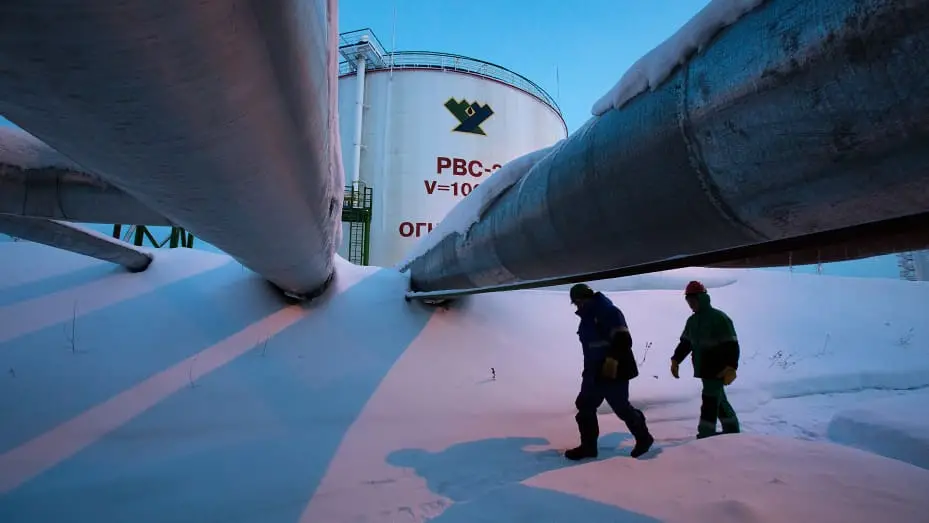Macro
JPMorgan: Brent Crude to Hit $100 Amid Russia Cuts
Oil prices may hit $100 a barrel due to Russia's deeper production cuts and geopolitical tensions, impacting U.S. gas prices and election dynamics.
By Athena Xu
ᐧ

Key Takeaway
- JPMorgan forecasts Brent crude could hit $100/barrel due to Russia's deeper-than-expected production cuts.
- Rising oil prices may pressure the Biden administration ahead of U.S. elections, with gas potentially reaching $4/gallon by May.
- The forecast hinges on no supply, demand, or U.S. policy response; strategic petroleum reserves could mitigate price spikes.
Oil Prices Surge on Supply Cuts
The global oil market is witnessing a significant surge in prices, with Brent crude potentially reaching $100 a barrel ahead of the U.S. election, primarily due to Russia's deeper-than-expected production cuts. JPMorgan's analysis indicates that despite initial expectations of Russia and Saudi Arabia unwinding production cuts, Russia has instead deepened its cuts by 471,000 barrels per day. This move, part of Russia's commitment to OPEC+ voluntary cuts of 2.2 million barrels per day through the second quarter, could push Brent to $90 in April and nearly $100 by September. Analyst Natasha Kaneva from JPMorgan suggests that these price levels could pressure the Biden administration, especially with gas prices possibly climbing to $4 a gallon by May, the highest since summer 2022.
Geopolitical Tensions Tighten Supplies
Recent Ukrainian drone attacks on Russian oil refineries and Iraq's decision to cut oil exports have exacerbated supply concerns, pushing West Texas Intermediate (WTI) above $83 a barrel. These developments, coupled with JPMorgan Chase & Co.'s report of 900,000 barrels of Russian refinery capacity going offline, have introduced a risk premium to oil prices. The market's response includes a less bearish tilt in options markets and tighter timespreads, indicating traders are pricing in a supply-constrained environment. Additionally, promising Chinese factory output and a robust U.S. economy are influencing the market dynamics, further supporting the bullish sentiment in oil prices.
Market Speculation and Federal Reserve's Role
The oil market's future direction is also heavily influenced by speculation around the U.S. Federal Reserve's monetary policy decisions. Analyst Han Tan from Exinity suggests that delays in Fed rate cuts could temper oil's upward trajectory, while a commitment to rate cuts could bolster U.S. oil demand. The upcoming release of weekly U.S. petroleum supply data by the Energy Information Administration is another key event that could impact oil prices, with analysts expecting declines in inventories for crude, gasoline, and distillates.
Street Views
- Natasha Kaneva, JPMorgan (Bullish on Brent crude oil):
"The shift in Russia’s oil strategy is surprising... Russia’s cuts could push Brent to $90 in April and nearly $100 by September, which would put pressure on the Biden administration in the runup to the November presidential elections."
Finance GPT
beta






